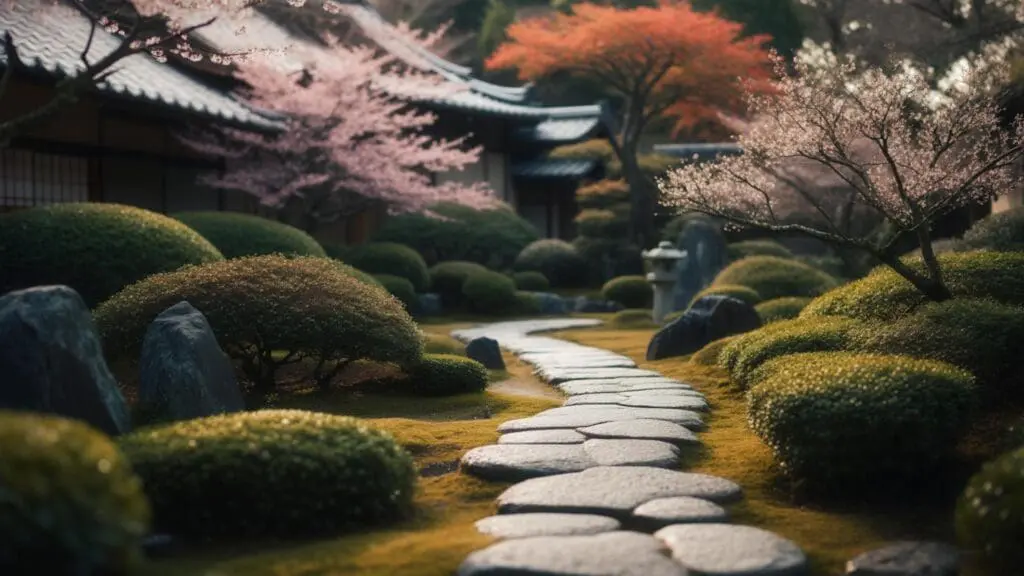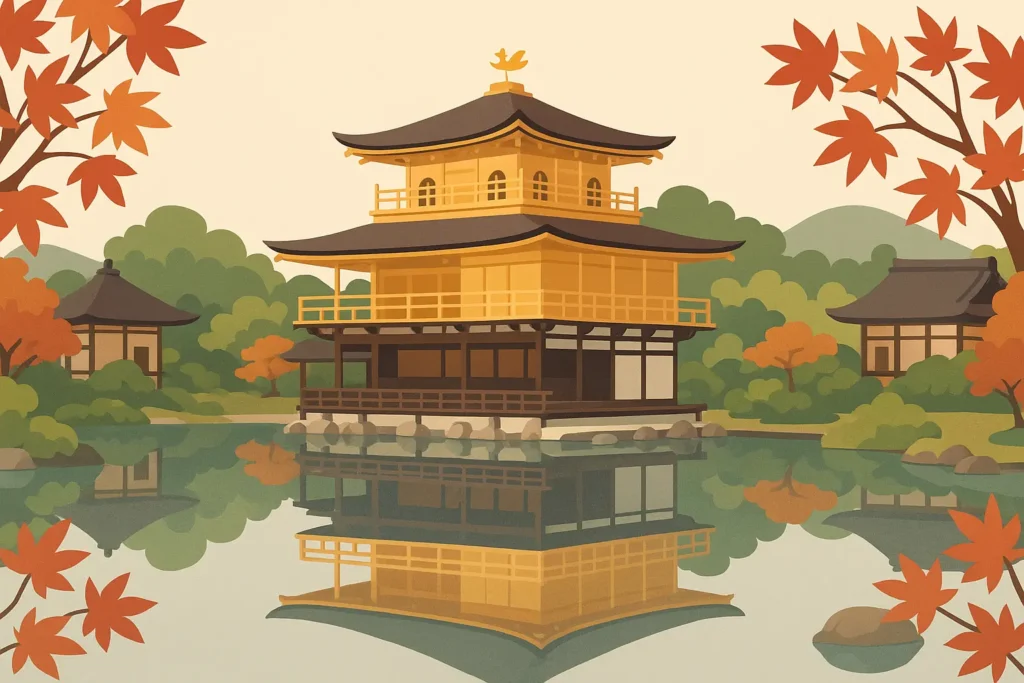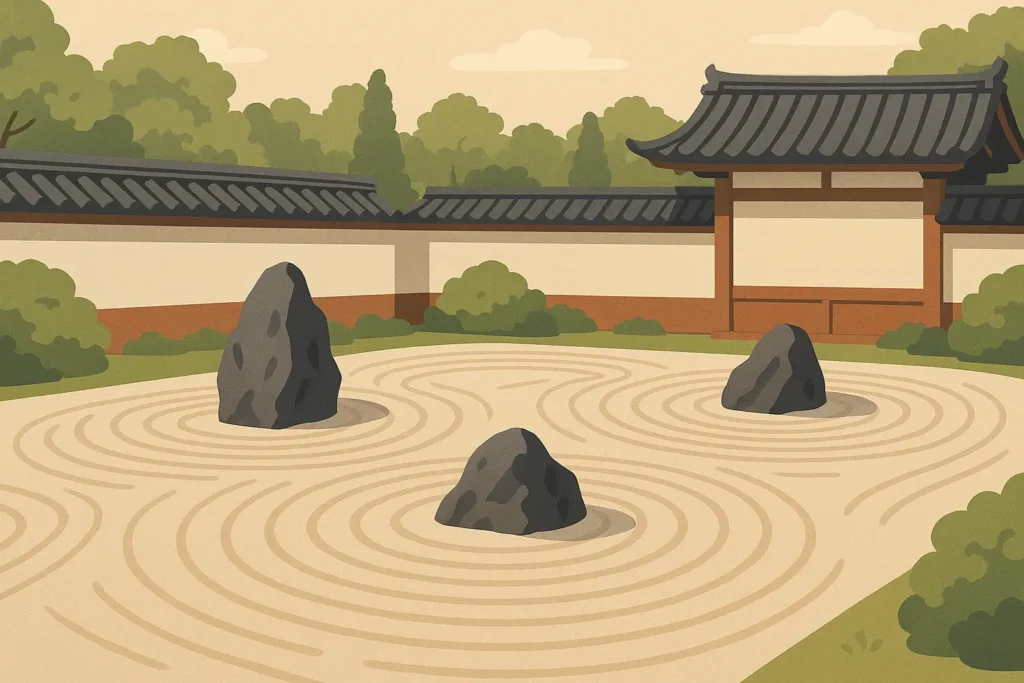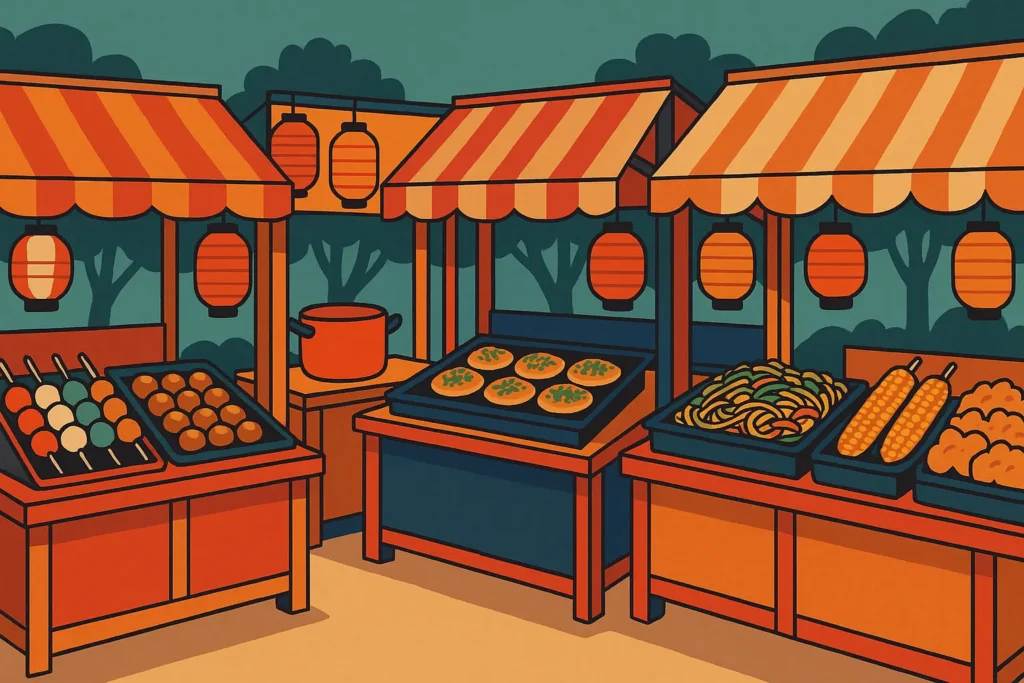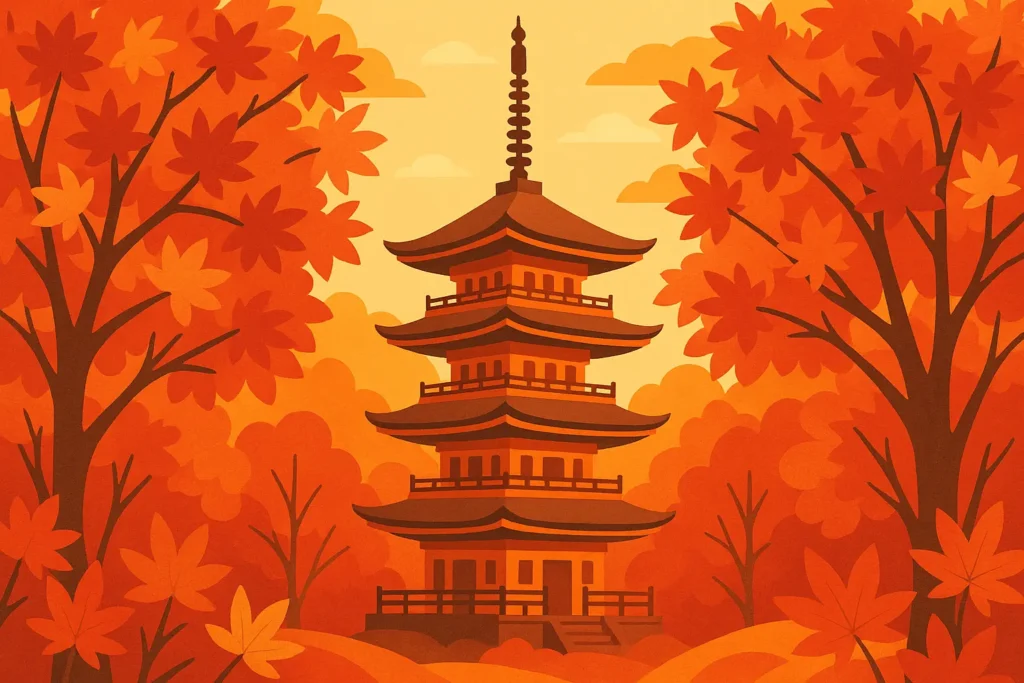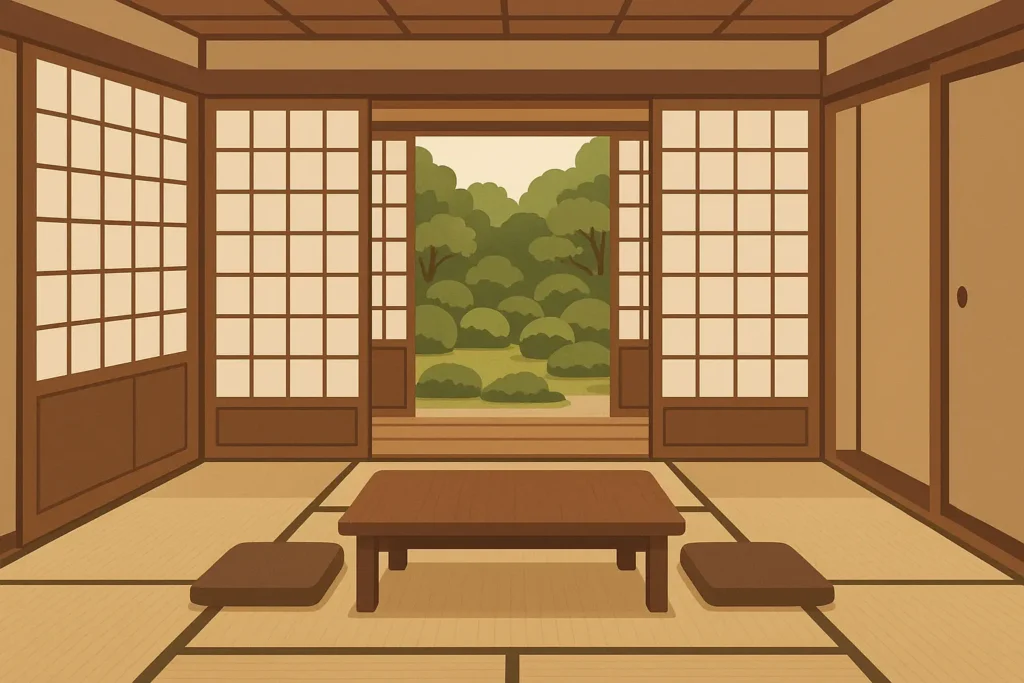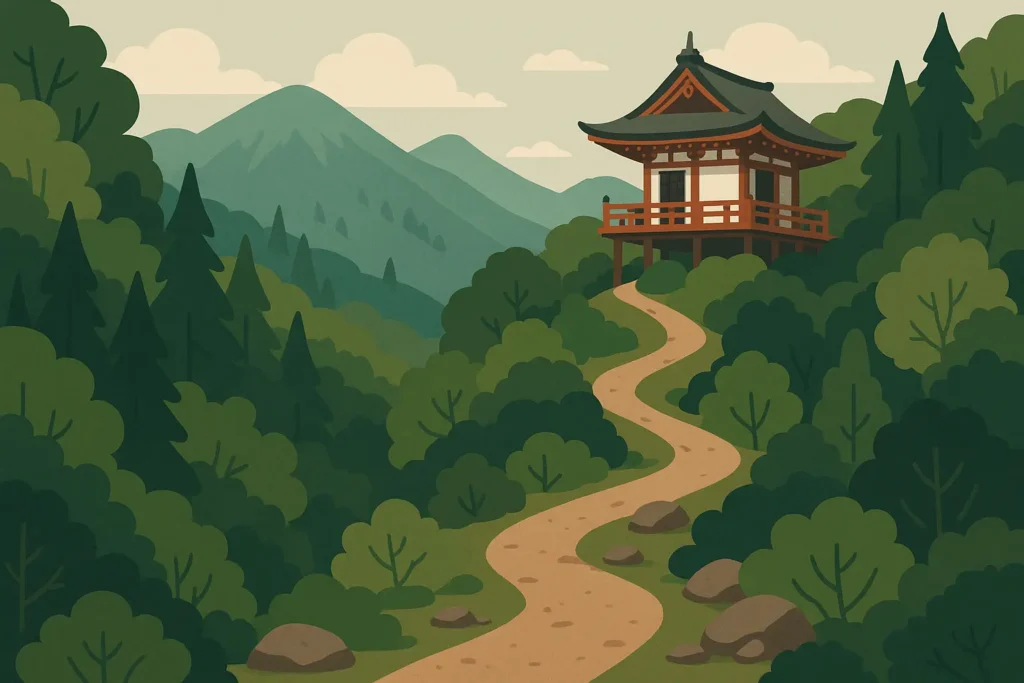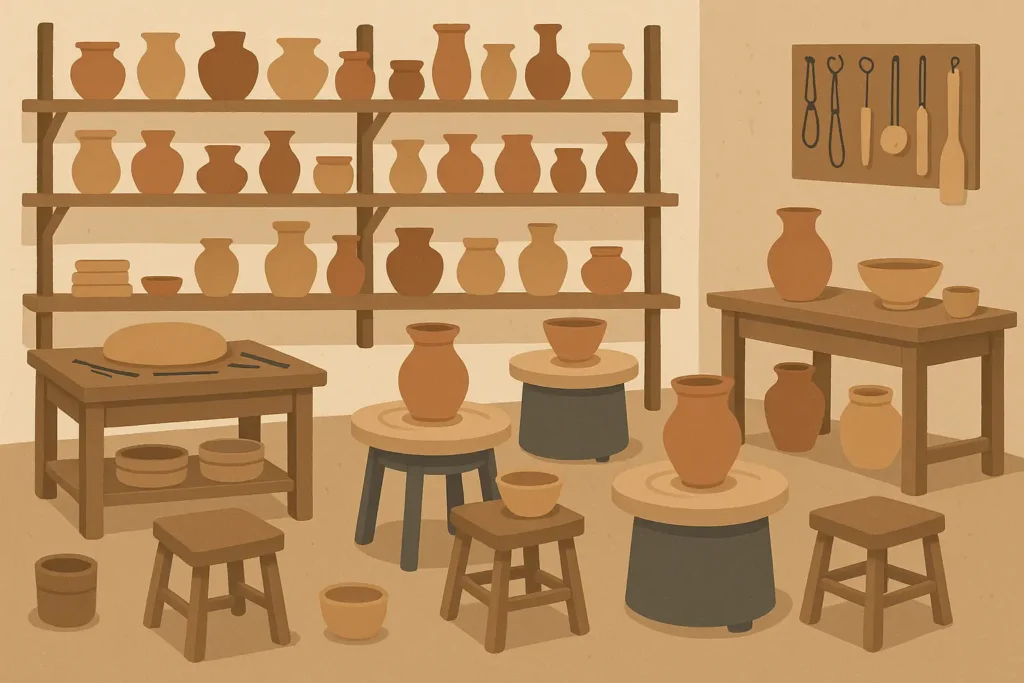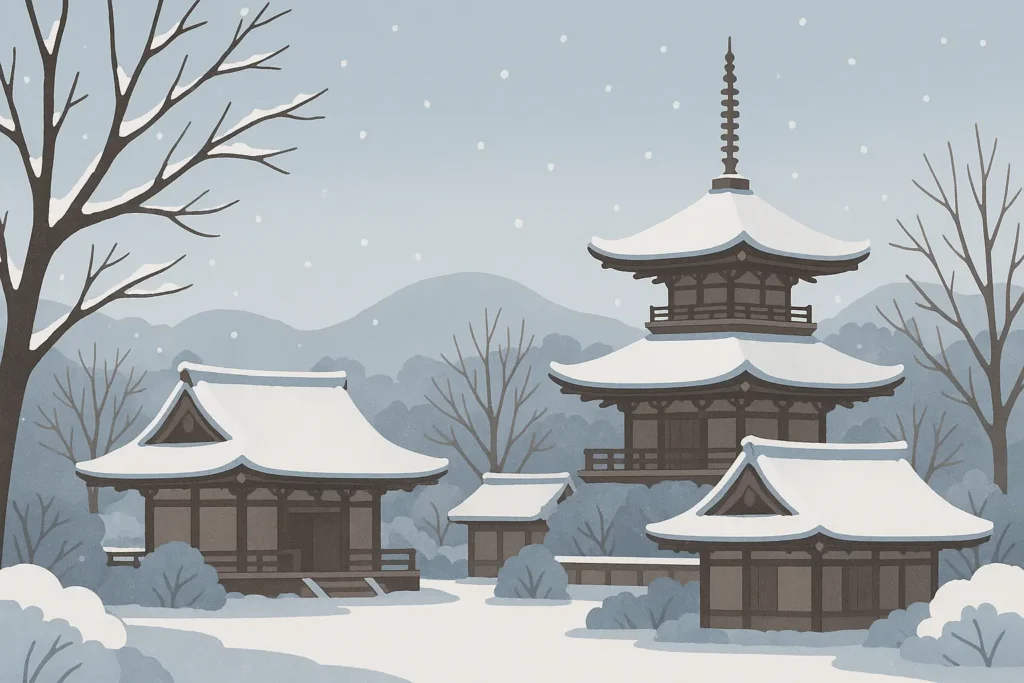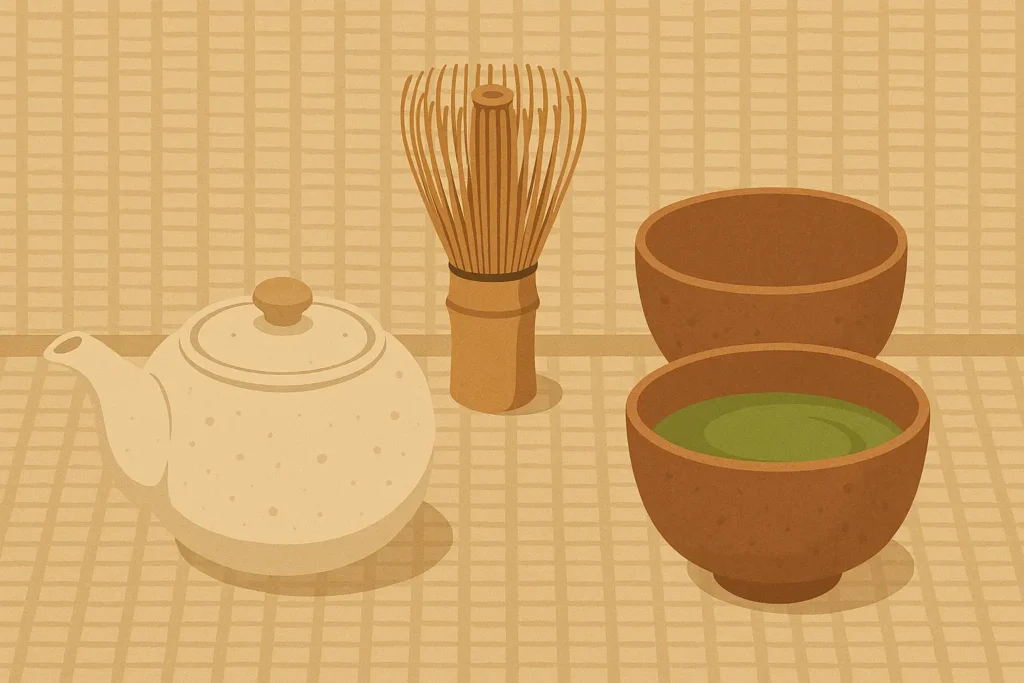Did you know that most travelers spend 4-5 days in Kyoto to truly experience its rich cultural offerings? According to travel experts, this timeframe allows visitors to venture beyond famous attractions and explore lesser-known gems. I remember staring at my laptop screen three months before my first Kyoto trip, completely paralyzed by the endless temple options and conflicting advice about timing. That overwhelming feeling of “Where do I even start?” is exactly why I’ve created this ultimate collection of 25 proven itineraries.
Plan your next trip stress-free with our Vacation Planner — it organizes destinations, budgets, and timelines for you.
Look, I’ve been there – drowning in Pinterest boards of golden pavilions and cherry blossom tunnels, wondering if I should book that expensive ryokan or stick with a hostel. After years of testing routes, making mistakes (so many mistakes), and helping dozens of travelers navigate this incredible city, I’ve learned what actually works versus what just looks good on Instagram.
Quick Resources:
-
Plan your next dream trip with our Vacation Planner
-
Get personalized color inspiration for your travel wardrobe with our Free Color Analysis Quiz
-
Plan your honeymoon or romantic Kyoto escape with our Honeymoon Planner
-
Explore all our Wedding & Travel Tools
Whether you’re planning a spiritual retreat, romantic getaway, or family adventure, you’ll find your perfect match among these carefully crafted plans. Each kyoto itinerary addresses real traveler challenges – from budget constraints to physical limitations – while ensuring you experience Kyoto’s magic authentically.
Planning a romantic getaway? Use our Honeymoon Planner to design the perfect couple’s trip to Kyoto or anywhere in the world.
TL;DR
- 25 complete Kyoto itineraries cover every travel style from budget backpacking to luxury experiences
- Duration-based plans range from essential 2-day highlights to comprehensive 6-day explorations
- Theme-focused itineraries target specific interests like temples, gardens, food, and photography
- Seasonal itineraries maximize cherry blossoms, festivals, autumn colors, and winter tranquility
- Budget options span from $50/day backpacker plans to $600/day luxury experiences
- Family-friendly, solo, couples, and group itineraries address different travel dynamics
- Off-the-beaten-path options provide authentic experiences away from tourist crowds
- Detailed examples include specific timing, costs, transportation, and cultural activities
- Professional planning services can transform good trips into unforgettable experiences
Planning Essentials for Your Kyoto Adventure
Here’s the thing about timing – whether you’ve got a quick weekend or a full week completely changes your game plan. Most first-time visitors find 3-4 days hits the sweet spot between seeing major highlights and avoiding what I call “temple fatigue” (trust me, by your fourth golden Buddha, they start blending together). This makes it the most popular timeframe for any kyoto itinerary.
| Duration | Best For | Temple Coverage | Cultural Depth | Recommended Budget |
|---|---|---|---|---|
| 2 Days | Weekend trips, stopovers | 4-6 major temples | Surface level | $100-200/day |
| 3-4 Days | First-time visitors | 8-12 temples + districts | Moderate immersion | $120-300/day |
| 5-6 Days | Cultural enthusiasts | 15+ temples + day trips | Deep exploration | $150-500/day |
Let’s talk seasons because this is where a lot of people mess up. Spring cherry blossoms are magical – and absolutely brutal. Think Disneyland-level crowds, hotel prices that’ll make you cry, and good luck getting that perfect Instagram shot without someone’s selfie stick in it. Beautiful? Absolutely. Relaxing? Not even close.
Summer in Kyoto is like being inside someone’s mouth. Seriously. The humidity is no joke – I’ve watched grown adults melt down (literally) trying to climb temple stairs in July heat. But the festivals are incredible, and if you can handle the sweat, you’ll have some amazing experiences.
Autumn is gorgeous but everyone knows it. Expect premium prices and crowded temples, though the foliage photos are worth fighting for. Winter? That’s my secret weapon. Peaceful temples, snow-covered gardens, and your wallet will thank you. Just pack warm clothes.
Transportation choices affect both your budget and how authentic your experience feels. Kyoto’s bus system looks intimidating, but it’s actually pretty forgiving. Worst case scenario? You end up in the wrong neighborhood and discover something cool you never would’ve found otherwise. Happened to me three times, and those “mistakes” became some of my favorite memories.
Your cultural interests should drive everything. Temple enthusiasts need different plans than food lovers or photography buffs. Some travelers crave spiritual experiences while others prefer hands-on workshops or just want to see pretty things. Be honest about what actually interests you, not what you think should interest you.
Discover your perfect travel palette with our Free Color Analysis Quiz — ideal for creating stunning, photo-ready looks that fit your destination.
Money talk – because let’s be real about this. That $50/day backpacker budget? Totally doable, but you’re eating a lot of convenience store curry and your feet will hurt from walking everywhere. Been there, survived it, have the blisters to prove it. Mid-range ($150-250/day) is where most people land comfortably. That $600/day luxury number? Yeah, that’s if you’re doing the full Michelin-starred kaiseki dinner thing. Worth it once, but your bank account will feel it.
Physical reality check: Kyoto involves serious walking, stair climbing, and navigating uneven temple grounds. I made the mistake of trying to do eastern and western districts in one day while wearing brand-new shoes. I was limping by hour three and missed half the temples I’d planned to see. Learn from my pain.
Group dynamics get weird fast. Traveling with friends sounds great until someone wants to spend two hours in a garden while another person is temple’d out by 10 AM. Set expectations early or prepare for some passive-aggressive shrine visits.
Quick Getaway Itineraries (2-6 Days)
1. Essential Kyoto 2-Day Itinerary
The 2-day itinerary? You’ll see the highlights, but you’ll also be exhausted and probably cranky by the end. I’ve watched couples argue over which temple to skip because they tried to cram too much in. But sometimes that’s all the time you’ve got, so let’s make it count.
This kyoto 2 day itinerary is all about hitting the absolute must-sees without completely destroying your feet. Start early at Kiyomizu-dera – and I mean early, like 8 AM early. That wooden stage with the city views? It’s magical with morning mist and maybe five other people versus the hundreds who show up by 9.
Short on time? Use our Vacation Planner to map out efficient, experience-packed itineraries for 2–3 day getaways.
From there, wander through Gion’s traditional streets. Pro tip: geishas actually walk these paths in late afternoon, not morning, so time it right if you want that authentic encounter. End day one at Fushimi Inari during golden hour – those torii gates create incredible shadows, and the hike up the mountain is surprisingly peaceful once you get past the first few hundred tourists.
Day two shifts west and north. The Arashiyama Bamboo Grove is like walking through a natural cathedral, but get there early before the tour buses arrive. Tenryu-ji Temple’s gardens are worth the admission fee, especially if you’re into that borrowed scenery technique where they incorporate distant mountains into the garden design.
Finish with Kinkaku-ji because, let’s face it, you came to Kyoto to see that golden pavilion. The reflection photos are best in morning when the water’s still, but afternoon light makes the gold leaf absolutely glow.
Fair warning: this pace is brutal. Expect 15,000+ steps daily and serious temple fatigue by day two. Pack the most comfortable shoes you own and maybe some blister patches.
Similar to comprehensive event planning, successful Kyoto trips require detailed scheduling and backup plans for weather or unexpected temple closures.
Sarah’s Weekend Reality Check: Flying from Tokyo on Friday night, Sarah had exactly 48 hours to “do” Kyoto. She followed my early-bird strategy – 8 AM at Kiyomizu-dera (practically had the place to herself), explored Gion during the afternoon geisha rush, and ended at Fushimi Inari for sunset photos. Day two was bamboo grove at 9 AM, Tenryu-ji gardens, and Kinkaku-ji by 3 PM. She was dead tired but grinning – sometimes cramming works if you do it smart.
2. Classic Kyoto 3-Day Itinerary
Three days is where Kyoto starts making sense instead of feeling like a temple-hopping marathon. This kyoto 3 day itinerary gives you breathing room to actually enjoy what you’re seeing instead of just checking boxes.
Day one still focuses on eastern Kyoto, but now you can linger. Spend real time at Kiyomizu-dera – climb to the wooden stage, explore the side temples, maybe even try the love stones (close your eyes, walk between them, and supposedly you’ll find true love… or at least a good story). The historic Sannenzaka streets are perfect for souvenir hunting and that matcha ice cream you’ve been seeing on Instagram.
Gion district deserves more than a quick walk-through. Find a traditional tea house, sit down for proper matcha, and people-watch. Yasaka Shrine at sunset is when the locals come to pray – it’s beautiful and authentic in a way that tourist-packed morning visits never are.
Day two explores northern temple masterpieces without rushing. Kinkaku-ji’s golden reflection is stunning, but don’t miss Ryoan-ji’s rock garden next door. Fifteen rocks arranged so you can only see fourteen from any angle – it’s minimalist genius that’ll either blow your mind or leave you wondering what the fuss is about. Ninna-ji rounds out the circuit with its five-story pagoda and seasonal gardens.
Western Kyoto gets day three. The bamboo forest creates those natural cathedral vibes everyone talks about, Tenryu-ji showcases classical garden design, and Togetsukyo Bridge offers river views and shopping opportunities without the temple overload.
This pacing actually lets you remember what you saw instead of everything blurring into a golden-pavilion-wooden-temple haze.
3. Comprehensive Kyoto 4-Day Itinerary
Four days is my sweet spot recommendation for first-timers. The kyoto itinerary 4 days takes everything from the classic three-day plan but adds that crucial fourth day for central Kyoto – Nishiki Market’s food chaos, Nijo Castle’s squeaky nightingale floors, and actual shopping that doesn’t involve temple gift shops.
The extra time means you can do things like take a proper cooking class, spend an afternoon in a single temple garden just soaking it in, or have those spontaneous discoveries that make travel memorable. Maybe you’ll stumble into a neighborhood festival, find that hidden shrine that’s not in any guidebook, or have a two-hour conversation with a monk who speaks perfect English and wants to practice.
This duration suits most travelers perfectly – you’ll feel comprehensive without exhausted, thorough without superficial. It’s long enough to find your rhythm but not so long that you start taking temples for granted.
4. Extended Kyoto 5-Day Itinerary
Five days opens up day trip possibilities that transform your understanding of the region. Nara with its friendly deer and massive Buddha statue is only an hour away. Osaka’s street food scene provides the perfect contrast to Kyoto’s refined cuisine. Or stay local and explore mountain temples that require half-day hikes but reward you with zero crowds and incredible views.
Planning extended adventures? Try our Vacation Planner to add day trips and custom stops with ease.
The relaxed pace is where this itinerary shines. No more rushing between temples or wolfing down lunch to stay on schedule. You can spend an entire morning in one garden, take a proper tea ceremony class that lasts three hours, or just wander neighborhoods without any agenda.
This duration accommodates seasonal activities perfectly. Spring visitors can chase cherry blossoms across multiple locations as they bloom at different times. Autumn travelers can photograph foliage at various temples throughout the day, catching different light. Summer brings festival participation opportunities that require flexible scheduling.
5. Ultimate Kyoto 6-Day Itinerary
Six days transforms you from tourist to temporary resident. Multiple day trips become feasible – maybe Nara one day, Osaka another, with time for mountain temples or traditional villages. Lesser-known neighborhoods reveal authentic local life that most visitors never experience.
You’ll have time for things like multi-day temple stays, intensive cultural workshops, or those photography expeditions where you return to the same spot at different times of day to capture perfect light. This duration justifies premium experiences – that luxury ryokan stay, private guided tours, or exclusive cultural access that costs serious money but creates once-in-a-lifetime memories.
Theme-Based Cultural Experiences
6. Temple & Shrine Pilgrimage Itinerary
If you’re the type who finds genuine peace in sacred spaces, this pilgrimage-style kyoto itinerary goes way beyond tourist snapshots. We’re talking authentic religious and cultural understanding, not just photo ops.
Temple stays (shukubo) are the real deal – you’ll participate in 5 AM morning prayers (yes, 5 AM), meditation sessions where your legs will fall asleep, and traditional vegetarian meals that are surprisingly filling. These overnight experiences offer cultural immersion that day visits can’t touch. Fair warning: the wake-up bell is loud and non-negotiable.
Hidden temples often provide the most meaningful encounters. While everyone’s fighting for photos at Kinkaku-ji, places like Sanzen-in’s moss gardens or tiny neighborhood shrines where locals actually pray daily create intimate spiritual connections. I’ve had some of my most profound travel moments sitting alone in temples most tourists never find.
This itinerary requires physical stamina – lots of walking, stair climbing, and navigating uneven stone paths in traditional footwear. Also demands cultural sensitivity. Dress modestly (pack pants, seriously), follow photography rules even when no one’s watching, and approach sacred spaces with genuine respect, not just Instagram hunger.
7. Garden Enthusiast Itinerary
Japanese garden design represents centuries of aesthetic refinement that’ll either fascinate you completely or leave you wondering why people stare
Japanese garden design represents centuries of aesthetic refinement that’ll either fascinate you completely or leave you wondering why people stare at rocks for hours. This specialized itinerary explores different garden styles with enough context to understand what you’re actually looking at.
Ryoan-ji’s rock garden is famous for a reason – fifteen rocks arranged so you can only see fourteen from any viewing angle. It’s minimalist genius that demonstrates wabi-sabi aesthetics, or it’s just rocks in sand depending on your mindset. Either reaction is valid.
Ginkaku-ji’s moss-covered landscapes change dramatically with seasons and weather. Those carefully raked sand patterns aren’t just decoration – they represent water flow and create different visual effects as shadows move throughout the day. Tenryu-ji incorporates distant mountains into garden composition through “borrowed scenery” techniques that blur the line between artificial and natural beauty.
Garden meditation practices enhance appreciation if you’re into that sort of thing. Many gardens include designated viewing spots specifically designed for contemplation. Spending extended time in single locations reveals subtle changes in light, shadow, and seasonal details that rushed visits miss completely.
Seasonal timing dramatically affects garden experiences. Spring brings cherry blossoms and fresh green moss that practically glows. Summer offers lush foliage and water features that provide actual cooling. Autumn delivers those spectacular color combinations everyone photographs. Winter reveals garden “bones” and snow-covered compositions that are hauntingly beautiful.
8. Traditional Culture Immersion Itinerary
Authentic cultural immersion requires getting your hands dirty rather than just watching from the sidelines. This itinerary combines tea ceremony instruction, traditional craft workshops, geisha entertainment, and ryokan stays for comprehensive cultural education that goes beyond surface-level tourism.
Tea ceremony (chanoyu) represents Japanese aesthetic principles through ritualized preparation and consumption that can seem painfully slow to Western sensibilities. Multi-hour workshops teach proper movements, seasonal variations, and philosophical foundations. You’ll learn to appreciate subtle flavor differences and ceremonial significance, or at least understand why people make such a big deal about it.
Traditional craft workshops offer hands-on creation experiences that connect you with centuries-old techniques. Pottery classes in Kiyomizu district, textile dyeing, calligraphy instruction, or woodworking sessions provide tangible cultural connections. Taking home self-made items creates lasting memories that beat any souvenir shop purchase.
Just as wedding day coordination requires attention to cultural traditions and timing, authentic Kyoto experiences demand respect for ceremonial protocols and seasonal customs.
Geisha entertainment (ozashiki) in authentic settings provides cultural education about traditional performing arts – not the tourist trap stuff, but real geiko and maiko who’ve spent years perfecting their craft. These experiences include dance performances, musical entertainment, and conversation opportunities that reveal the artistry behind the mystique.
Ryokan stays complete cultural immersion through traditional hospitality that can feel awkward if you’re not prepared. Tatami rooms, futon bedding, communal baths where you’ll be naked with strangers, and kaiseki meals with courses you might not recognize. It’s authentic Japanese lifestyle experience that pushes comfort zones in the best way.
9. Food Lover’s Kyoto Itinerary
Kyoto’s culinary scene spans everything from imperial court cuisine to street food that locals actually eat. This food-focused itinerary explores haute cuisine kaiseki meals, traditional tofu preparations, sake brewing, and street food culture, serving as your ultimate kyoto travel guide for culinary experiences.
| Culinary Experience | Cost Range | Duration | Best Time | Cultural Value |
|---|---|---|---|---|
| Kaiseki Dinner | $150-500 | 2-3 hours | Evening | Extremely High |
| Cooking Class | $80-150 | 3-4 hours | Morning/Afternoon | High |
| Street Food Tour | $30-80 | 2-3 hours | Evening | Moderate |
| Sake Tasting | $40-120 | 1-2 hours | Afternoon/Evening | Moderate |
| Temple Vegetarian | $25-60 | 1 hour | Lunch | High |
About that $500 kaiseki dinner – it’s art on a plate, but you might leave hungry. I always grab convenience store snacks afterward. No shame in that game. Each dish reflects seasonal themes and centuries of refinement, but Western stomachs sometimes need more substance than aesthetic perfection provides.
Traditional tofu cuisine (yudofu) originated in Kyoto’s Buddhist temples and showcases how simple preparation can highlight ingredient quality. Temple restaurants serve authentic versions that’ll either convert you to the subtle beauty of tofu or confirm that you need meat in your life.
Sake tasting experiences explore regional brewing traditions that take advantage of Kyoto’s soft water. Brewery visits include production explanations and food pairing guidance, plus you’ll learn why some sake costs $200 a bottle while others cost $8.
Street food adventures in Pontocho Alley and Nishiki Market reveal what locals actually eat. Yakitori stalls, traditional sweets, pickled vegetables, and seasonal specialties provide authentic flavors at prices that won’t destroy your budget. Plus, pointing and smiling works surprisingly well when language fails.
10. Photography Itinerary
Photography-focused itineraries require obsessive timing and location knowledge for optimal results. This specialized plan coordinates golden hour temple visits, seasonal color photography, and composition techniques for Kyoto’s most photogenic locations.
Those perfect Insta shots of empty temples? Either taken at 6 AM or heavily photoshopped. Probably both. Kinkaku-ji’s reflection photography works best in early morning when the water’s still as glass, but you’ll be competing with other photographers who also read that tip online.
Fushimi Inari’s torii gates create dramatic shadows during late afternoon light, but the crowds thin out as you climb higher. Most tourists give up after the first few hundred gates, so persistence pays off with better shots and fewer people.
Technical considerations include temple photography restrictions that vary by location and season. Many temples prohibit interior photography but allow exterior shots. Tripods may be restricted during busy periods, so bring a lightweight option and be prepared to go handheld.
Seasonal photography opportunities require advance planning and flexible scheduling. Cherry blossom photography demands specific timing and backup locations because peak bloom lasts maybe a week. Autumn foliage photography benefits from weather monitoring – overcast days can actually provide better color saturation than bright sunshine.
Composition techniques for temple architecture include leading lines, symmetry, and scale references. Garden photography benefits from foreground elements, depth of field control, and patience to capture seasonal timing. Instagram-worthy locations require crowd management strategies and alternative angles to avoid the same shot everyone else posts.
Seasonal Kyoto Adventures
11. Spring Cherry Blossom Itinerary
Cherry blossom season transforms Kyoto into a pink wonderland that’s simultaneously magical and absolutely brutal. Peak bloom lasts only 7-10 days, creating intense competition for prime viewing spots and accommodations that’ll cost you a small fortune. This specialized kyoto itinerary focuses on maximizing sakura experiences while managing seasonal challenges that can make or break your trip.
Maruyama Park becomes hanami central with families spreading blue tarps for elaborate picnics that put your average barbecue to shame. Arrive early morning to secure spots, or visit evening for illuminated night viewing when the party atmosphere really kicks in. It’s beautiful chaos that contrasts perfectly with serene temple settings.
Philosopher’s Path offers romantic cherry blossom tunnels perfect for couples photography, assuming you can find a spot without other couples doing the same thing. Early morning visits avoid crowds while capturing soft light filtering through pink petals. The 2-kilometer walk connects multiple temples with continuous sakura viewing, but prepare for slow progress during peak bloom.
Backup locations become essential when weather affects bloom timing – and it will. Daigo-ji, Ninna-ji, and lesser-known neighborhood spots provide alternatives when main locations disappoint. I learned this the hard way when a late frost killed half the blossoms at my planned locations.
12. Summer Festival Itinerary
Summer brings Kyoto’s most spectacular festivals but also heat and humidity that’ll test your commitment to cultural experiences. This itinerary balances festival participation with survival strategies for temperatures that regularly hit 95°F with 80% humidity.
Gion Matsuri (July) represents Japan’s most famous festival with elaborate floats, traditional music, and street celebrations that transform the entire city. Month-long festivities culminate in grand processions requiring advance positioning for optimal viewing – and serious heat tolerance.
Evening temple visits become essential during summer. Many temples offer extended hours or special illumination events that provide relief from daytime heat while creating unique photography opportunities. Night markets and riverside dining along Kamo River provide natural air conditioning through elevated platforms (kawadoko) that offer traditional summer experiences.
Festival participation goes beyond passive observation. Yukata rental, traditional games, and street food sampling provide authentic cultural immersion, though sweating through traditional clothing adds authenticity you might not want. Local festivals in neighborhood shrines offer intimate experiences without tourist crowds and slightly better air circulation.
Heat management strategies include early morning temple visits, midday indoor cultural activities, and evening exploration. Hydration becomes critical – convenience stores sell everything from sports drinks to cooling towels that actually work.
13. Autumn Foliage Itinerary
Autumn transforms Kyoto into a masterpiece that rivals New England foliage, but with temples instead of farmhouses. This foliage-focused itinerary requires precise timing and flexible scheduling because peak colors wait for no one’s vacation schedule.
Kiyomizu-dera’s wooden stage provides panoramic autumn views across eastern Kyoto’s colored hillsides that’ll make you understand why people plan entire trips around this season. Evening illumination events extend viewing opportunities and create magical photography conditions, though you’ll pay premium prices for the privilege.
Tofuku-ji earned its reputation as Kyoto’s autumn headquarters with over 2,000 maple trees creating tunnel-like pathways that look computer-generated but are completely natural. The temple’s Tsutenkyo Bridge offers elevated viewing perspectives impossible elsewhere, assuming you can get close enough through the crowds.
Eikando earned the nickname “Maple Temple” through centuries of autumn beauty that draws photographers from around the world. Multiple garden areas provide varied compositions and color combinations throughout the complex, but visiting during peak season requires patience and crowd tolerance.
Weather monitoring becomes critical for timing visits. Peak colors last only 2-3 weeks, and a single windstorm can strip trees overnight. I’ve seen people cry when their perfectly planned foliage trip coincided with an early cold snap that ended the season prematurely.
14. Winter Contemplation Itinerary
Winter reveals Kyoto’s contemplative soul through empty temples, snow-covered gardens, and intimate cultural experiences impossible during crowded seasons. This peaceful kyoto itinerary maximizes winter’s unique advantages that most travelers overlook.
Temple visits become genuinely meditative experiences without summer crowds or spring chaos. Snow-covered temple roofs and gardens create ethereal beauty perfect for contemplative photography and actual spiritual reflection instead of hurried sightseeing.
Hot spring experiences (onsen) provide warmth and relaxation after cold temple visits, plus authentic Japanese bathing culture that pushes comfort zones in the best way. Traditional bathhouse culture offers genuine local experiences and physical comfort that summer visitors miss entirely.
Indoor cultural activities gain serious appeal during cold weather. Extended tea ceremonies, craft workshops, and museum visits provide cultural depth while keeping you warm and dry. Cozy dining experiences in traditional restaurants offer seasonal comfort foods and intimate atmospheres that summer’s outdoor dining can’t match.
Budget advantages make winter Kyoto’s best-kept secret – lower accommodation rates, reduced crowds at paid attractions, and off-season dining deals. You’ll get better service, more personal attention, and authentic experiences at fraction of peak season costs.
Budget-Conscious Travel Plans
15. Budget Backpacker Itinerary
Budget travel in Kyoto requires creativity and flexibility but delivers authentic experiences that luxury travelers often miss. This backpacker-friendly kyoto itinerary maximizes cultural immersion while keeping expenses under control through strategies I’ve tested personally during broke student years.
Accommodation in hostels ($25-35 nightly) provides social opportunities and central locations that hotels can’t match. Shared dormitories, communal kitchens, and traveler networks create community experiences and money-saving opportunities through shared meals and group activities. Plus, hostel staff usually speak English and provide local insights guidebooks miss.
Free temple visits form the backbone of budget exploration. Many temples charge no admission, while others offer free grounds access that provides 80% of the experience at 0% of the cost. Fushimi Inari, Yasaka Shrine, and numerous neighborhood temples provide spiritual experiences without entrance fees.
Street food and convenience store meals keep dining costs under $15 daily while providing authentic flavors. Nishiki Market samples, convenience store bento boxes, and local ramen shops offer genuine Japanese food at backpacker prices. I’ve had some of my best meals from 7-Eleven, no joke.
Public transportation day passes ($6) provide unlimited bus and subway access that makes expensive taxis unnecessary. Walking between nearby temples saves money while providing authentic neighborhood experiences that tour buses skip entirely.
Similar to budget party planning, successful low-cost Kyoto trips require strategic choices and creative alternatives to expensive tourist activities.
Maximize your savings and experiences with our Vacation Planner — perfect for budget-conscious travelers.
Mike’s Reality Check: College student with only $60 daily, Mike stayed in Kyoto Station hostel ($28/night) and bought 3-day bus passes. Convenience store breakfast ($3), free temples all day, Nishiki Market lunch ($8), and ramen dinners ($6) kept him fed and happy. Total daily spend averaged $58, leaving room for occasional temple admissions. Despite tight budget, he experienced authentic ceremonies, made lifelong friends with fellow travelers, and discovered hidden neighborhood shrines that expensive tours never visit.
16. Mid-Range Comfort Itinerary
Mid-range travel strikes that perfect balance between comfort and authenticity that satisfies most visitors without breaking the bank. This $150-250 daily budget allows quality experiences without constant cost anxiety that ruins vacation vibes.
Comfortable accommodations ($80-120 nightly) in business hotels or traditional inns provide private rooms, quality amenities, and convenient locations without luxury pricing. Traditional ryokan experiences become accessible at this budget level, offering authentic cultural immersion with modern comfort.
Quality dining experiences expand to include authentic restaurants, seasonal specialties, and occasional premium meals that create lasting memories. Budget allows for kaiseki lunch experiences, quality sake tastings, and memorable dining without constant calculator consultation.
Cultural activities expand to include paid temple admissions, guided tours, and hands-on workshops that provide deeper understanding. Tea ceremony experiences, craft classes, and cultural performances become accessible without financial stress.
Transportation flexibility includes occasional taxi use, private tours, or premium train experiences that save time
Transportation flexibility includes occasional taxi use, private tours, or premium train experiences that save time and energy. Comfort increases without eliminating authentic local transportation experiences that provide cultural immersion.
Strategic splurges on unique experiences – premium temple visits, exclusive cultural access, or special dining – create memorable moments within reasonable budgets that justify the investment.
17. Luxury Kyoto Experience Itinerary
Luxury travel in Kyoto opens doors to exclusive experiences and service levels that transform good trips into once-in-a-lifetime adventures. This premium approach justifies significant investment through unique access and personalized attention impossible at lower budget levels.
Premium ryokan accommodations ($800-1200 nightly) provide traditional luxury with modern amenities that showcase Japanese hospitality at its finest. Private gardens, exclusive dining, personal service, and cultural immersion create unforgettable experiences worth the splurge for special occasions.
Private guided tours with cultural experts provide personalized education and exclusive access that independent travel can’t match. Skip lines, visit restricted areas, and gain insights impossible during self-guided exploration. The knowledge and connections justify premium pricing.
Exclusive dining at Michelin-starred restaurants showcases Japanese culinary artistry at its peak through multi-course kaiseki meals, premium sake pairings, and chef interactions that create educational and delicious experiences.
Luxury transportation through private cars with English-speaking drivers eliminates navigation stress while providing cultural commentary and flexible scheduling that maximizes limited vacation time.
Exclusive cultural experiences include private tea ceremonies, master craftsman workshops, and after-hours temple access that create unique opportunities unavailable to regular tourists.
Travel Style-Specific Itineraries
18. Solo Traveler Contemplative Itinerary
Solo travel in Kyoto offers unparalleled opportunities for personal reflection and cultural immersion that group dynamics often complicate. This contemplative kyoto itinerary maximizes solitude benefits while addressing practical solo travel considerations that can make or break the experience.
Peaceful temple visits become deeply personal experiences without group time pressures or different interest compromises. Extended meditation sessions, quiet garden contemplation, and spiritual practices flourish in solo settings where you can move at your own pace and linger where inspiration strikes.
Temple stay experiences (shukubo) provide structured solo travel with cultural immersion that eliminates loneliness concerns. Monastic routines, meditation instruction, and vegetarian meals create meaningful experiences with built-in social structure and spiritual guidance.
Journaling spots throughout the city offer reflection opportunities that group travel rarely allows. Temple gardens, riverside paths, and quiet cafes provide perfect settings for processing cultural experiences and personal insights that emerge through solo exploration.
Safe solo dining strategies include counter seating at ramen shops, hotel restaurants, and department store food courts that provide quality meals without social awkwardness. These options often lead to conversations with locals and authentic cultural exchanges.
Language barrier solutions include translation apps, picture menus, and gesture communication that work surprisingly well. Solo travelers often receive extra attention and assistance from helpful locals who appreciate independent cultural curiosity.
19. Romantic Couples Itinerary
Romantic travel in Kyoto combines ancient beauty with intimate experiences perfect for couples celebrating relationships or creating special memories. This romance-focused itinerary creates meaningful moments while accommodating different interests that couples often struggle to balance.
Sunset viewing locations provide natural romantic settings that require minimal planning but maximum impact. Kiyomizu-dera’s wooden stage, Arashiyama’s river views, and temple garden overlooks create perfect couple photography opportunities with stunning backdrops.
Intimate dining experiences in traditional restaurants offer romantic atmospheres with authentic cultural elements that enhance relationships. Private dining rooms, seasonal kaiseki meals, and sake tastings create memorable evenings that strengthen bonds through shared cultural discovery. Couples’ spa experiences at luxury hotels or traditional onsen provide relaxation and bonding opportunities that push comfort zones together. Hot spring baths, massage treatments, and wellness activities enhance romantic connections while experiencing authentic Japanese culture.
Planning romantic honeymoons requires balancing shared interests with individual preferences while creating intimate moments that strengthen relationships.
Use our Honeymoon Planner to design an unforgettable romantic itinerary — from temples to ryokans.
Romantic walking routes through historic districts create intimate exploration opportunities where hand-in-hand strolls through traditional streets, bridge crossings, and garden paths provide natural romance without forced activities.
Shared cultural experiences like tea ceremonies, cooking classes, and craft workshops create bonding opportunities while learning together. These activities provide conversation topics and shared memories that last long after vacation ends.
20. Family-Friendly Kyoto Itinerary
Family travel in Kyoto requires balancing cultural education with entertainment while managing children’s needs and attention spans that can challenge even patient parents. This family-focused kyoto itinerary creates positive experiences for all ages without sacrificing cultural authenticity.
Child-appropriate temple visits emphasize interactive elements and shorter attention spans that work with kids’ natural curiosity. Fushimi Inari’s torii gate tunnels become adventure walks, Kiyomizu-dera’s wooden stage provides dramatic views kids remember, and temple festivals offer engaging experiences that hold attention.
Interactive cultural experiences keep children engaged while providing education that sticks. Hands-on activities work infinitely better than passive observation for young travelers who learn through doing rather than listening.
| Family Activity | Age Range | Duration | Cost | Educational Value |
|---|---|---|---|---|
| Temple Stamp Collection | 6-16 years | All day | $20-40 | High |
| Candy Making Workshop | 8-14 years | 2 hours | $40-60 | Moderate |
| Origami Classes | 5-12 years | 1 hour | $15-25 | Moderate |
| Traditional Games | 4-10 years | 30 min | Free | Low |
| Cultural Scavenger Hunt | 8-16 years | 3 hours | $10-20 | High |
Family restaurants with tatami seating, children’s menus, and cultural elements provide authentic dining experiences suitable for families. Many restaurants welcome children and provide high chairs or floor seating options that accommodate different comfort levels.
Manageable walking distances prevent family fatigue while maintaining cultural experiences. Strategic rest stops, playground visits, and transportation breaks keep everyone happy and engaged without constant complaints.
Educational elements disguised as games – temple stamp collecting, cultural scavenger hunts, and photo challenges – maintain children’s interest while providing learning opportunities that feel like fun rather than forced education.
21. Active Adventure Itinerary
Active travelers can combine physical challenges with cultural exploration through Kyoto’s mountain temples, hiking trails, and adventure activities that satisfy fitness needs while providing authentic cultural experiences.
Hiking trails to mountain temples provide physical challenges with spiritual rewards that justify the effort. These elevated locations offer spectacular views and authentic pilgrimage experiences away from tourist crowds that buses can’t reach.
Bicycle tours through Arashiyama, along Kamo River, and through traditional neighborhoods provide efficient exploration with physical activity that covers more ground than walking while maintaining cultural immersion.
Mountain temple visits require genuine physical fitness but reward visitors with unique experiences away from tourist crowds. Steep approaches, mountain settings, and isolated locations provide adventure elements that challenge and inspire.
Physical cultural activities combine education with participation through martial arts demonstrations, traditional sports, and outdoor ceremonies that engage body and mind simultaneously.
Adventure elements include river activities, mountain climbing, and outdoor cultural experiences that combine physical challenges with authentic cultural immersion for travelers seeking active engagement.
Special Interest Deep Dives
22. Spiritual & Meditation Itinerary
Spiritual seekers find Kyoto’s Buddhist heritage provides profound opportunities for meditation practice, spiritual learning, and inner development that goes far beyond typical tourist experiences. This contemplative kyoto itinerary emphasizes authentic spiritual experiences over photo opportunities.
Zen meditation sessions (zazen) with qualified instructors provide proper technique instruction and spiritual guidance that transforms temple visits from sightseeing to genuine practice. Temple meditation halls offer authentic settings for developing mindfulness skills.
Temple stay experiences (shukubo) immerse visitors in monastic life through participation in daily routines, meditation practices, and spiritual teachings that provide deep cultural and spiritual immersion impossible during day visits.
Contemplative garden visits emphasize meditation and reflection rather than photography or rushed sightseeing. Extended time in single locations allows deeper appreciation and spiritual connection that hurried temple-hopping prevents.
Spiritual practices include sutra copying, walking meditation, and dharma discussions with monks that provide authentic Buddhist experiences and spiritual education tailored to individual interests and understanding levels.
Retreat-style scheduling allows extended meditation periods, reflection time, and spiritual processing without tourist activity pressure that can interfere with contemplative experiences.
23. Art & Craft Itinerary
Art enthusiasts discover Kyoto’s rich artistic traditions through hands-on workshops, master craftsman encounters, and authentic creation experiences that provide tangible cultural connections. This creative kyoto itinerary emphasizes participation over passive observation.
Traditional craft workshops in pottery, textile dyeing, woodworking, and metalwork provide authentic learning experiences with master artisans who’ve spent decades perfecting techniques passed down through generations.
Art museums showcase historical and contemporary Japanese art with cultural context and artistic education that explains techniques, cultural significance, and aesthetic principles behind beautiful objects.
Pottery experiences in Kiyomizu district connect visitors with centuries-old ceramic traditions through hands-on creation, kiln visits, and master instruction that provide comprehensive pottery education and take-home memories.
Artisan neighborhood visits reveal authentic creative communities and traditional workshop settings that provide insights into artistic life and creative processes that tourist areas never show.
Gallery visits and artist studio tours provide contemporary artistic perspectives and cultural evolution understanding that bridges traditional crafts with modern creative expression.
24. Off-the-Beaten-Path Itinerary
Adventurous travelers seeking authentic experiences beyond tourist circuits discover Kyoto’s hidden gems through local neighborhoods, secret temples, and genuine cultural encounters that most visitors never find. This alternative itinerary requires flexibility and cultural curiosity.
Lesser-known temples provide intimate spiritual experiences without crowds or commercialization that major tourist sites can’t offer. These hidden gems often provide more authentic encounters with local religious practices and community life.
Local neighborhoods reveal authentic Kyoto life through residential areas, neighborhood shrines, local markets, and community gathering places that provide genuine cultural immersion away from tourist infrastructure and English signage.
Hidden restaurants frequented by locals offer authentic cuisine without English menus or tourist pricing. These discoveries require adventurous eating and cultural openness but provide memorable culinary experiences that guidebooks miss.
Similar to discovering hidden celebration venues, off-the-beaten-path Kyoto exploration rewards curious travelers with authentic encounters unavailable to typical tourists.
Authentic cultural experiences include local festivals, community events, traditional workshops, and neighborhood celebrations that tourists rarely discover but locals treasure as genuine community traditions.
Alternative transportation methods like local buses to residential areas, walking through non-tourist neighborhoods, and following locals create exploration opportunities that reveal authentic daily life rather than curated cultural performances.
25. Day Trip Integration Itinerary
Extended stays allow exploration beyond Kyoto’s borders through strategic day trips that enhance overall cultural understanding while maintaining accommodation convenience. This integrated approach provides regional context that deepens appreciation for Kyoto’s unique characteristics.
Nara day trips offer ancient capital experiences with friendly deer, massive Buddha statues, and historical significance that predates Kyoto by centuries. The one-hour train journey makes this an easy addition that provides perspective on Japan’s cultural evolution.
Osaka day trips provide culinary adventures and urban contrasts that highlight Kyoto’s traditional atmosphere through comparison. Street food culture, modern attractions, and different regional specialties complement Kyoto experiences while satisfying varied interests.
Mountain region excursions provide natural beauty and traditional rural culture that showcases Japan’s countryside life beyond urban temples. These trips require full days but offer unique perspectives on traditional village life and mountain spirituality.
Regional transportation passes make multiple day trips economical while providing scheduling flexibility for weather-dependent activities or personal interest changes that arise during extended stays.
Integration strategies balance Kyoto temple visits with regional diversity, creating comprehensive Kansai experiences that provide broader cultural understanding rather than single-city focus.
Detailed Itinerary Breakdowns
Classic Kyoto 3-Day Itinerary (Real Implementation)
Day 1: Eastern Kyoto Heritage Trail
Morning (9:00 AM): Start at Kiyomizu-dera before the tour buses arrive and ruin your photos. The wooden stage provides those panoramic city views everyone posts on Instagram, but morning light actually makes them worth posting. Spend 90 minutes exploring – don’t just snap and dash.
Walking through historic Sannenzaka and Ninenzaka streets (30 minutes) feels like time travel if you ignore the souvenir shops selling plastic samurai swords. These preserved streets showcase actual Edo period architecture mixed with tourist traps, but the atmosphere works if you squint past the crowds.
Afternoon (1:00 PM): Lunch in Gion district where prices reflect the neighborhood’s reputation but the food justifies the cost. Hanami-koji street offers everything from casual to upscale dining with authentic Kyoto cuisine that tastes different from Tokyo versions.
Explore Gion district (2 hours) properly – not just Instagram drive-bys. Traditional tea houses, cultural sites, and if you’re lucky, actual geisha sightings during their commute to evening appointments. Yasaka Shrine at sunset brings locals who come to pray rather than pose for photos.
Evening (6:00 PM): Dinner in Pontocho Alley’s impossibly narrow streets lined with restaurants where you’ll eat better food than most Michelin-starred places at fraction of the cost.
Day 2: Northern Temple Circuit Without the Rush
Morning (9:00 AM): Kinkaku-ji during optimal lighting when the gold-leaf pavilion actually looks golden instead of washed out. Multiple viewpoints provide different perspectives, but the classic reflection shot requires perfect timing and water conditions.
Midday (11:30 AM): Ryoan-ji’s famous rock garden where you’ll either experience profound philosophical awakening or wonder what the fuss is about. Fifteen rocks arranged so only fourteen are visible from any angle – minimalist genius or overrated tourist trap depending on your mindset.
Traditional lunch nearby (1:00 PM) at local restaurant serving seasonal specialties that change based on what’s actually fresh rather than what tourists expect.
Afternoon (2:00 PM):
Afternoon (2:00 PM): Ninna-ji Temple features that five-story pagoda everyone photographs plus seasonal gardens that provide spectacular spring viewing if you time it right. Cherry tree gardens are worth the seasonal planning effort.
Day 3: Western Kyoto Nature Experience
Morning (9:00 AM): Early arrival at Arashiyama ensures peaceful bamboo grove experiences before tourist crowds transform serene natural cathedrals into photo shoot chaos.
Bamboo Grove walk (9:30 AM) through towering bamboo creates ethereal atmosphere when morning light filters through properly. Later visits feel like walking through a crowded hallway with bamboo walls.
Midday (11:00 AM): Tenryu-ji Temple showcases classical garden design with borrowed scenery techniques that incorporate distant mountains into garden composition – it’s architectural genius that works on multiple aesthetic levels.
Afternoon (2:00 PM): Togetsukyo Bridge area provides river views, traditional shopping, and optional monkey park visits that offer city panoramas worth the climb if you’re into that sort of thing.
Budget Backpacker 4-Day Reality Check
Daily Budget Breakdown (Tested Personally):
- Accommodation: $25-35 (hostel dormitory with actual humans)
- Transportation: $6 (day pass that pays for itself after three rides)
- Meals: $15-20 (street food, convenience stores, occasional splurge)
- Activities: $5-10 (temple admissions, cultural sites that charge)
Day 1: Free Cultural Immersion
Morning: Fushimi Inari Shrine with free admission and torii gate hiking that provides spiritual experiences and serious leg workout. Pack convenience store breakfast and water because temple food is expensive.
Afternoon: Kiyomizu-dera area exploration including free temple grounds access and historic street walking that costs nothing but time. Street food lunch from local vendors who don’t speak English but understand pointing.
Evening: Convenience store dinner and hostel social activities with fellow travelers who become instant friends through shared budget struggles.
Day 2: Northern Temples on Actual Budget
Morning: Early bus to northern temples with day pass that makes transportation affordable. Kinkaku-ji admission ($4) for iconic golden pavilion experience that justifies the cost. Packed lunch from convenience store eaten in temple gardens.
Afternoon: Free temple visits and public garden access in northern district. Walking between locations saves money while providing authentic neighborhood experiences that buses skip.
Evening: Affordable local restaurant dinner ($8-12) in residential area where locals eat and prices reflect reality rather than tourist expectations.
Day 3: Western Nature and Culture
Morning: Train to Arashiyama ($3) for bamboo grove (free) and river area exploration that provides nature experiences without admission fees.
Budget-friendly lunch at local restaurant or packed meal from convenience store that offers better food than expensive tourist restaurants.
Afternoon: Free temple ground visits and nature walking. Optional monkey park ($5) for city views that might be worth the splurge depending on weather conditions.
Evening: Return to central Kyoto and affordable dinner at local izakaya where pointing at other tables’ food works perfectly for ordering.
Day 4: Central Markets and Farewell
Morning: Nishiki Market exploration with free samples and affordable breakfast items that provide authentic food experiences without restaurant prices.
Nijo Castle visit ($6) for historical and cultural education that explains Japanese feudal history better than any guidebook.
Afternoon: Final temple visits and souvenir shopping within budget constraints that still allows meaningful purchases.
Farewell dinner at affordable restaurant celebrating successful budget travel experience that proves luxury isn’t necessary for authentic cultural immersion.
The Johnson Family’s Reality: With two teenagers and $200 daily budget, the Johnsons needed activities engaging everyone without constant complaints. They started each day with temple stamp collecting (kids loved the competitive challenge), included interactive experiences that held attention, and balanced walking with strategic taxi rides when feet rebelled. Their 4-day kyoto itinerary included Fushimi Inari (teenagers loved hiking through endless torii gates), Kiyomizu-dera (family photos on wooden stage), Arashiyama (bamboo forest adventure), and cooking class where everyone made sushi. The teens initially complained about “boring temples” but ended up competing for most temple stamps and asking to extend their stay.
Choosing Your Perfect Kyoto Experience
Duration and Pacing Reality Check
Two-day itineraries provide essential highlights but require marathon pacing that leaves you exhausted and cranky. You’ll see major temples and districts but miss cultural depth and those spontaneous discoveries that make travel memorable. This duration suits weekend trips, stopovers, or travelers with seriously limited vacation time.
Three-day itineraries offer balanced pacing with comprehensive coverage that doesn’t require superhuman endurance. This duration allows cultural activities, quality dining, and flexibility while covering essential experiences without constant rushing. Most first-time visitors find this timeframe ideal for their kyoto itinerary.
Four to six-day itineraries enable deep cultural immersion, day trips, and specialized interests that transform good trips into life-changing experiences. Extended stays allow temple stays, intensive workshops, seasonal activities, and authentic local connections impossible during shorter visits.
Pacing preferences vary dramatically among travelers. Some prefer intensive sightseeing with maximum coverage while others enjoy contemplative exploration with extended time at fewer locations. Your personality and energy levels should guide duration selection more than arbitrary recommendations.
Seasonal Optimization That Actually Works
Spring brings legendary cherry blossoms plus extreme crowds, premium pricing, and booking challenges that can ruin trips if you’re unprepared. Success requires advance planning, flexible dates, and crowd management strategies. The spectacular beauty justifies challenges for many travelers, but understand what you’re signing up for.
Summer offers vibrant festivals and extended daylight but heat and humidity that can literally make you sick. Indoor cultural activities, evening temple visits, and serious heat management become survival necessities. Festival experiences provide unique cultural value unavailable other seasons, but prepare for sweat-soaked clothing and constant hydration needs.
Autumn delivers spectacular foliage with comfortable weather but premium pricing and crowded conditions that rival spring chaos. Photography opportunities and perfect temperatures make this season highly desirable despite higher costs and competition for viewing spots.
Winter provides peaceful experiences, budget-friendly pricing, and authentic cultural immersion with minimal crowds that reveal Kyoto’s contemplative soul. Cold weather limits some outdoor activities but enhances indoor cultural experiences and creates those magical snow-covered temple moments.
Budget Impact That Actually Matters
Budget travel ($50-70 daily) requires serious creativity and flexibility but provides authentic experiences through local transportation, street food, free activities, and hostel accommodations that often exceed expensive alternatives for cultural immersion.
Mid-range travel ($150-250 daily) balances comfort with authenticity through quality accommodations, diverse dining, cultural activities, and transportation flexibility that satisfies most travelers’ comfort needs while maintaining genuine experiences.
Luxury travel ($400-600+ daily) provides exclusive access, personalized service, and premium experiences through high-end accommodations, Michelin dining, private tours, and unique cultural opportunities unavailable at lower budget levels but not necessarily more authentic.
Budget optimization strategies include strategic splurges on unique experiences, free activity maximization, and cost-saving techniques that maintain cultural authenticity while reducing unnecessary expenses that don’t enhance the actual experience.
Cultural Depth vs Coverage Balance
Temple-focused itineraries provide deep spiritual and architectural understanding but may lack broader cultural context that helps everything make sense. These specialized approaches suit travelers with specific religious or architectural interests who want expertise over variety.
Comprehensive itineraries balance various cultural aspects but risk superficial experiences without deep understanding. This approach suits first-time visitors wanting broad cultural exposure that provides foundation for future specialized trips.
Theme-based itineraries allow expertise development in specific areas through focused exploration that creates specialized knowledge but limits broader cultural exposure that provides context.
Cultural immersion through hands-on activities, local interactions, and authentic experiences often provides more meaningful understanding than passive sightseeing, regardless of itinerary type or duration.
How Professional Planning Can Elevate Your Trip
Planning the perfect kyoto itinerary involves countless decisions, cultural nuances, and logistical coordination that can overwhelm even experienced travelers who’ve successfully navigated other destinations. The complexity of coordinating temple visits, cultural experiences, dining reservations, and group dynamics mirrors the challenges of planning major life celebrations.
Expert local knowledge navigates cultural etiquette, seasonal timing, and hidden gems impossible to discover through guidebooks or online research alone. Professional planners understand temple protocols, restaurant reservation systems, and cultural activity timing that maximize authentic experiences while avoiding tourist traps.
Stress-free coordination eliminates anxiety from language barriers, transportation confusion, and cultural misunderstandings that can turn dream trips into frustrating struggles. Having someone handle reservations, provide cultural context, and solve unexpected problems transforms travel from stressful navigation to enjoyable exploration.
Exclusive cultural access through professional connections opens doors to private tea ceremonies, after-hours temple visits, master craftsman workshops, and authentic cultural encounters unavailable to independent travelers regardless of budget or research efforts.
Group coordination becomes especially valuable for complex trips involving multiple travelers with different interests, budgets, and physical capabilities. Professional planning ensures everyone’s needs are met while maintaining group harmony that can make or break shared experiences.
The same skills that make excellent event planning – cultural sensitivity, problem-solving, coordination expertise, and stress management – prove invaluable when navigating Kyoto’s rich cultural landscape. Both experiences focus on creating perfect moments that will be remembered for lifetime.
Whether you’re planning a destination wedding in Kyoto, honeymoon adventure, or group celebration, professional planning services can transform overwhelming cultural complexity into seamless, memorable experiences that exceed expectations while respecting cultural traditions.
Planning a wedding or cultural celebration abroad? Explore all our Wedding & Travel Tools to make it effortless.
Ready to transform your Kyoto dreams into reality? Contact professional coordination services today to discover how expert planning can create your perfect Japanese cultural adventure without the stress and uncertainty of independent navigation.
Final Thoughts
Your perfect Kyoto experience exists among these 25 carefully crafted itineraries, each designed to address specific needs, interests, and constraints that real travelers actually face. The key lies in selecting the approach that matches your unique combination of time, budget, interests, and travel style rather than following generic recommendations.
Here’s the truth – Kyoto will surprise you no matter which itinerary you choose. Maybe it’s the monk who helps you find your lost phone, or the random festival you stumble into, or just that moment when you’re sitting in a temple garden and everything clicks. That’s the real magic, and no amount of planning can manufacture it. But good planning sure helps you be ready for it when it happens.
Cultural preparation enhances every experience, regardless of your chosen itinerary. Understanding basic temple etiquette, learning a few Japanese phrases, and approaching sacred spaces with genuine respect creates more meaningful encounters and demonstrates cultural sensitivity that locals genuinely appreciate.
Most importantly, embrace the journey of cultural discovery with curiosity and openness rather than rigid expectations. Kyoto has been welcoming travelers for over 1,400 years, and its temples, gardens, and traditions have survived because they offer something profound to those who approach them with genuine interest and respect rather than just photo opportunities.
The best kyoto itinerary is ultimately the one you actually follow while remaining flexible enough to embrace unexpected discoveries that make travel memorable long after you’ve forgotten the specific temple names and perfect photo angles.
1-800-BRIDESMAID
The Newlywed
Card Game
something extra to love
Read the weekly newsletter from Bridesmaid for Hire, 1-800-Bridesmaid, to hear about real stories, from strangers, who need advice on love, life, friendship, and so much more.
Looking for the perfect wedding gift for someone you adore? Grab The Newlywed Card Game. It's a fun and interactive game they can play on their honeymoon or future date nights.
